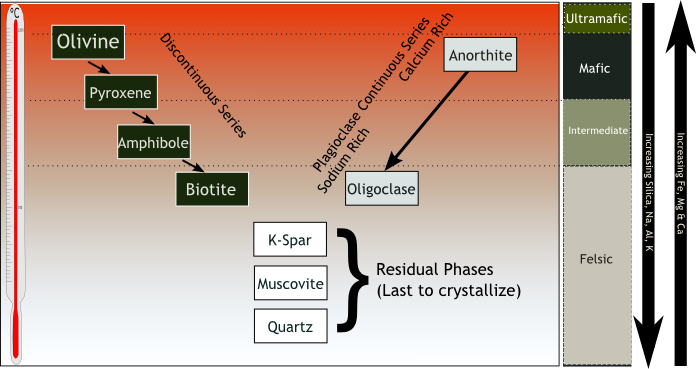2.2 Magma, Lava, and Volcanic Hazards
Magma vs. Lava

So what is the big difference between magma and lava anyway? Compositionally, they can be the exact same thing! The magma from a volcano can be made of the exact same stuff as the lava from the volcano! So why do geologists use these two different words?
It is to tell the difference between molten rock above and below the surface. Magma is molten rock below the surface, in the volcano’s chamber. It hasn’t erupted yet.
Lava is molten rock above the surface. It has already erupted.
Is there any other reason that geologists use these two words. Yes!
Lava forms finer-grained rocks than magmas (which form larger, more crystalline rocks), because it cools so quickly above ground. Knowing the difference between these two words can be very helpful when studying igneous rocks!
Magma/Lava Composition
What is molten rock made out of? Well, it varies based on temperature and the types of elements found in a particular magma before it erupts. View the chart below called Bowen’s Reaction series, based on the discoveries of geologist Norman L. Bowen, below:

Very generally, there are three main types of magmas/lavas:
Mafic: This molten rock is generally iron and magnesium-rich. It does not have much silica (SiO2) in it. Its name is derived from “MAgnesium and FerrIC” iron. There is a version of this rock called “ultramafic” that has an even higher amount of iron and magnesium in it, although those lavas and magmas are rarer.
Felsic: This molten rock is generally silica-rich. Silica is a word for SiO2, which appears in abundant minerals on the Earth such as Feldspar, Quartz, Muscovite, etc. The name of this rock is derived from the words “FELdspar and SilICa.”
Intermediate: This molten rock is compositionally in between Felsic and Mafic. It has more iron and magnesium in it than what you would find in a felsic rock, but more silica than you would expect in a mafic rock. Intermediate magmas and lavas are quite abundant in volcanoes.
Viscosity
Magma composition affects the way a volcano erupts. It is due to a property called “viscosity.” Watch the video below to learn about this property, and then answer the questions!

